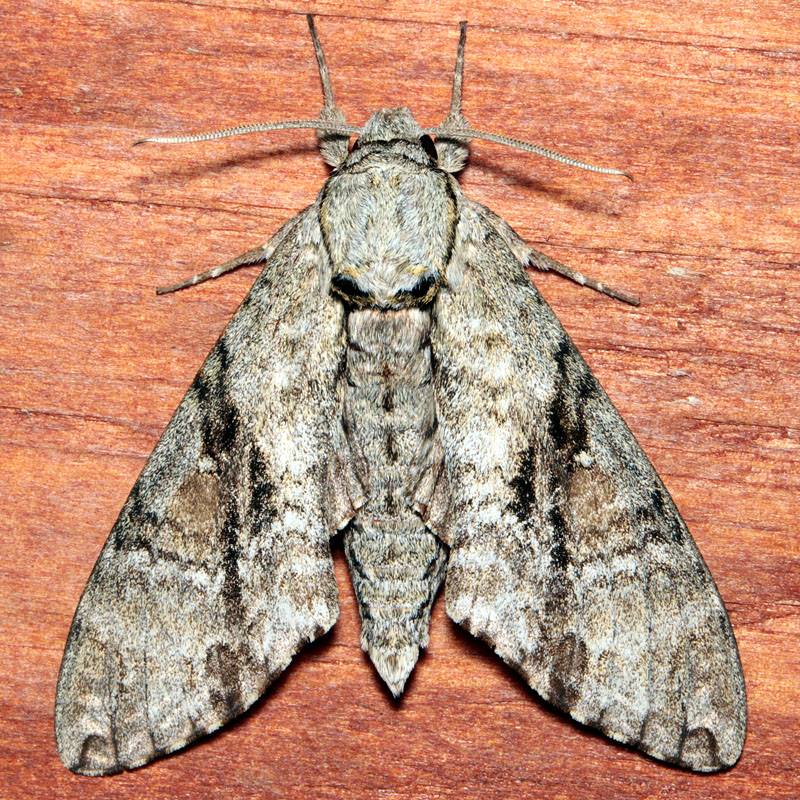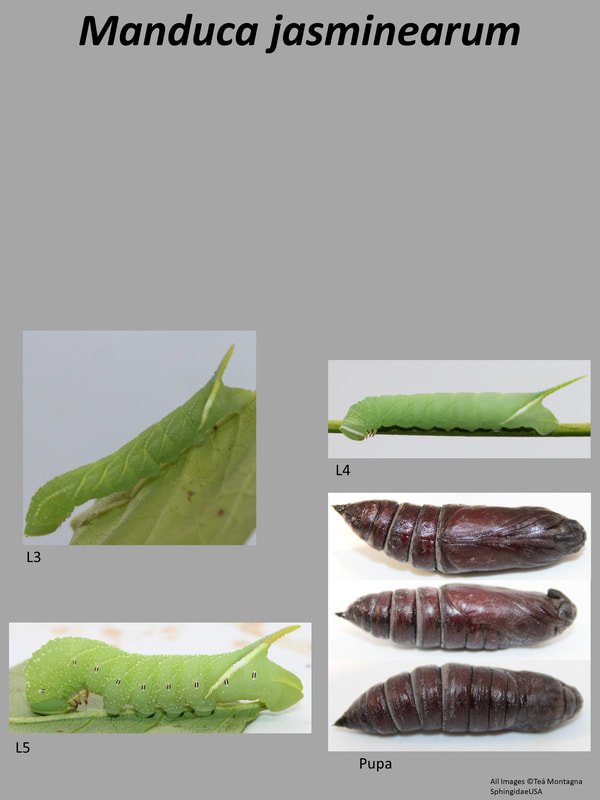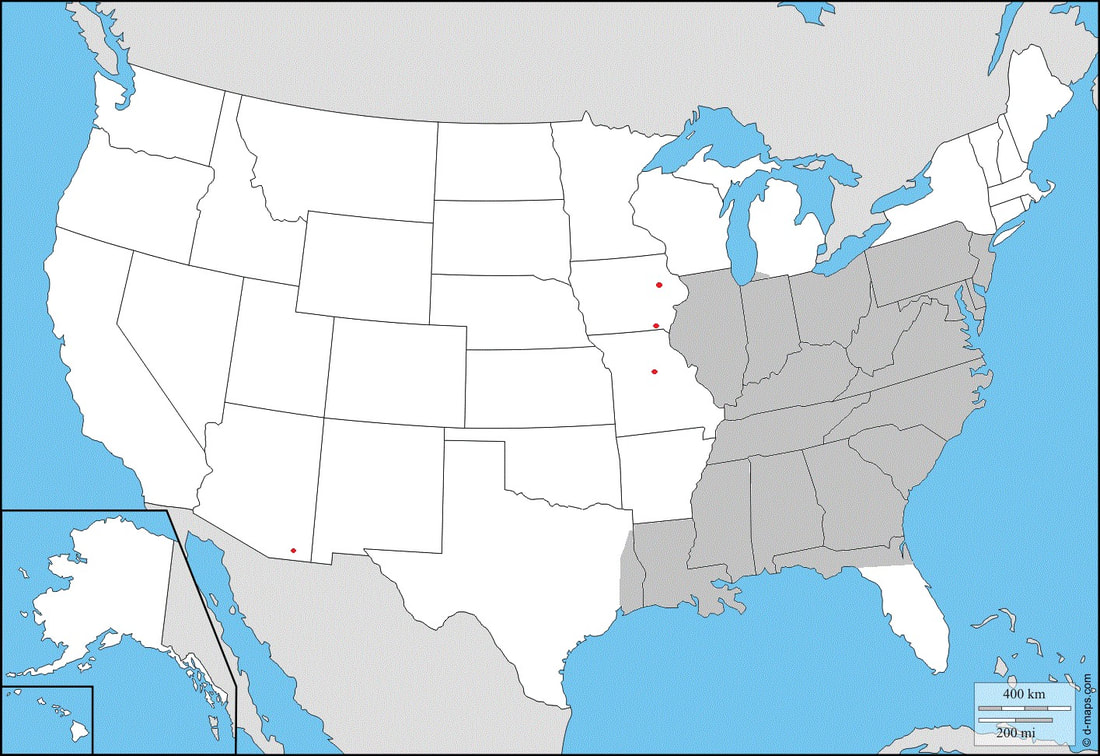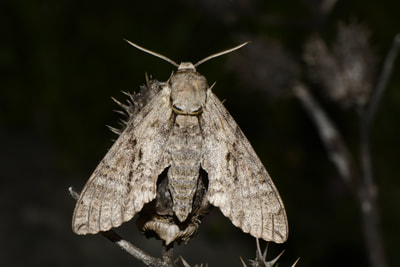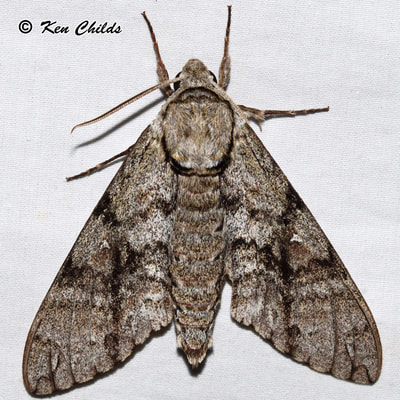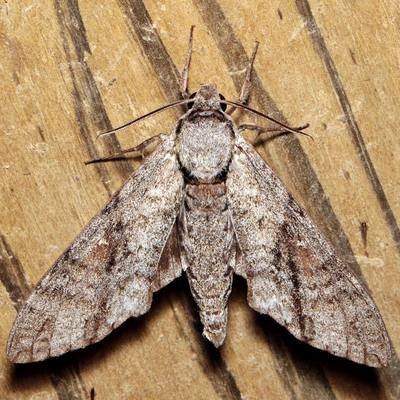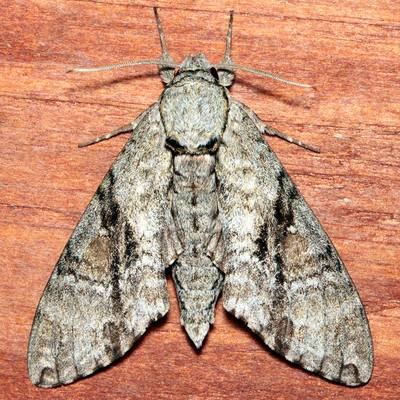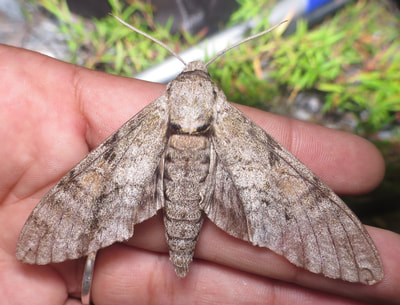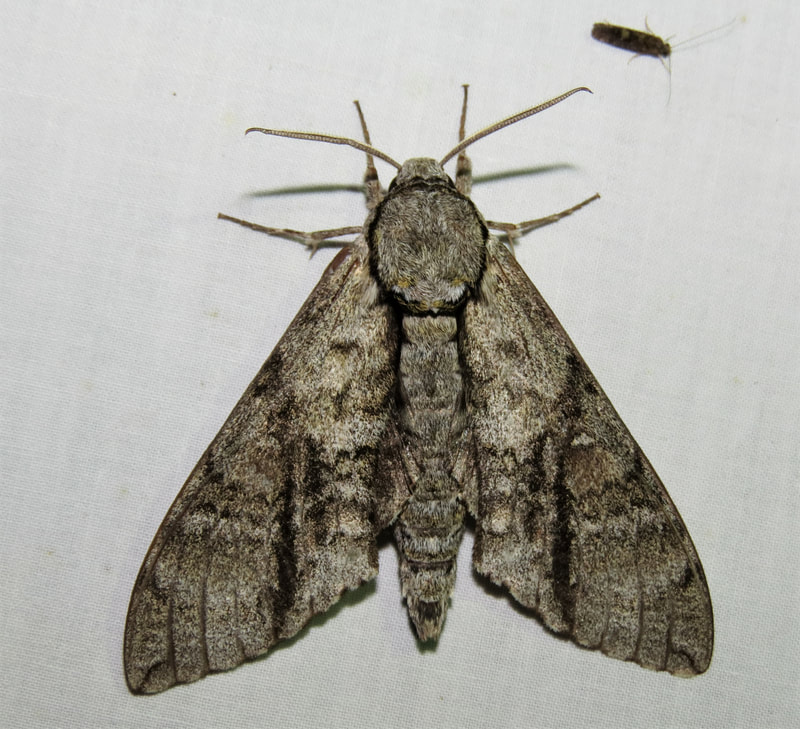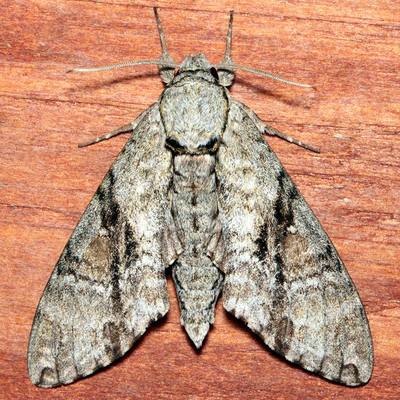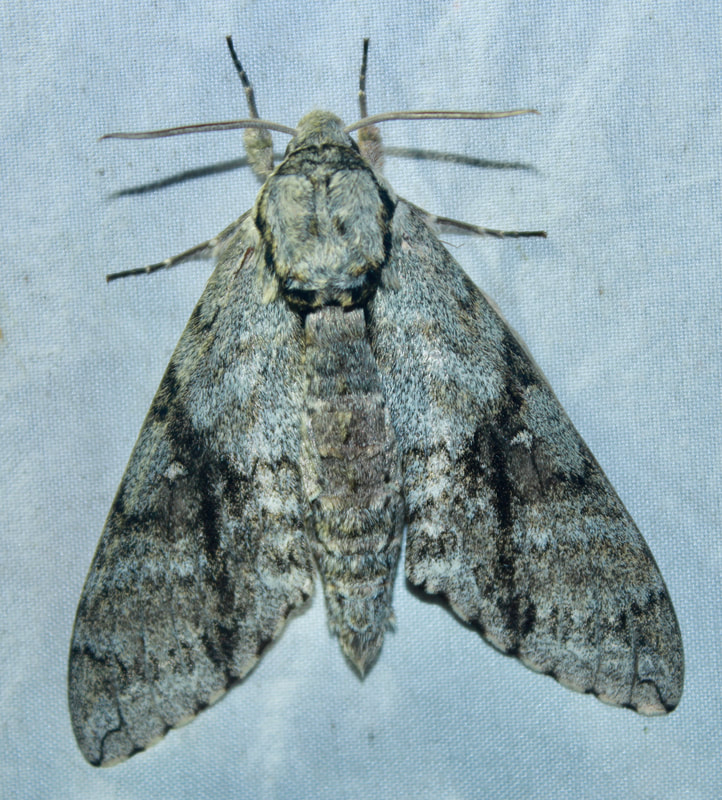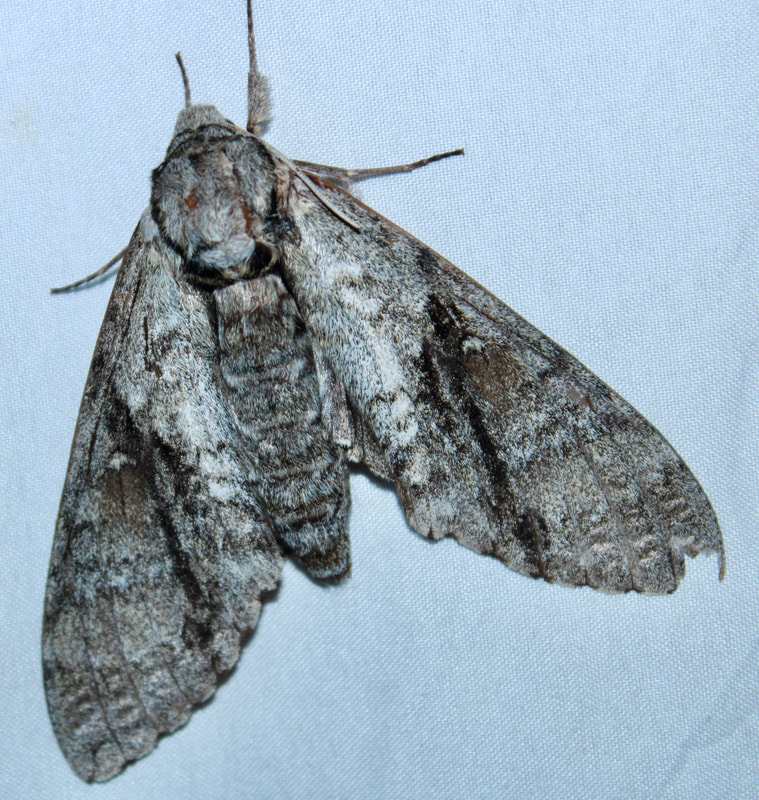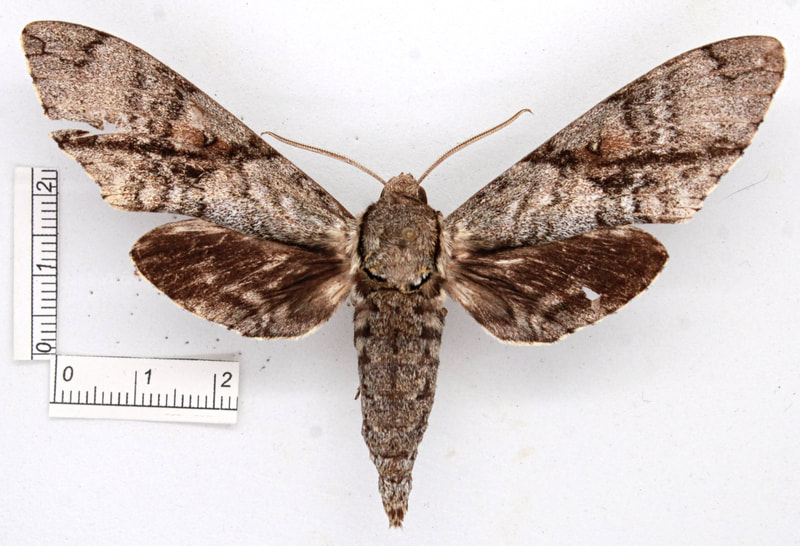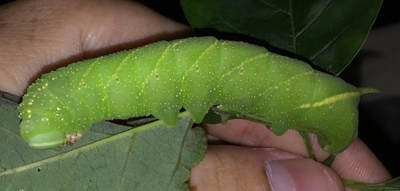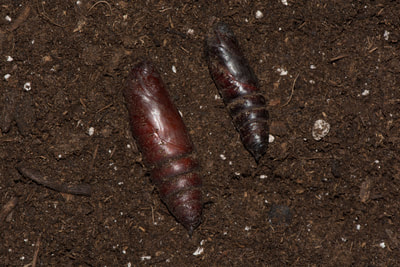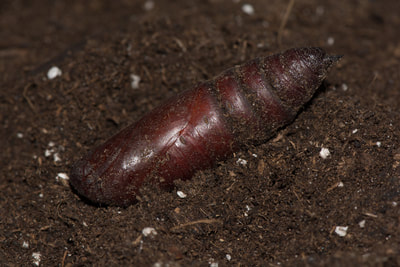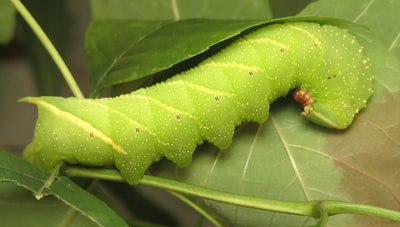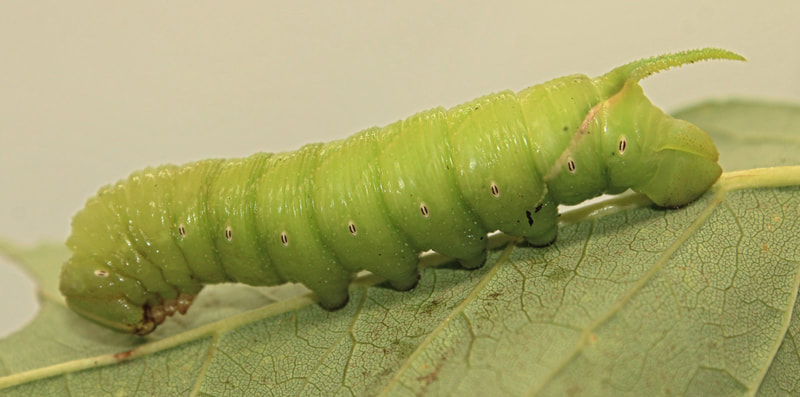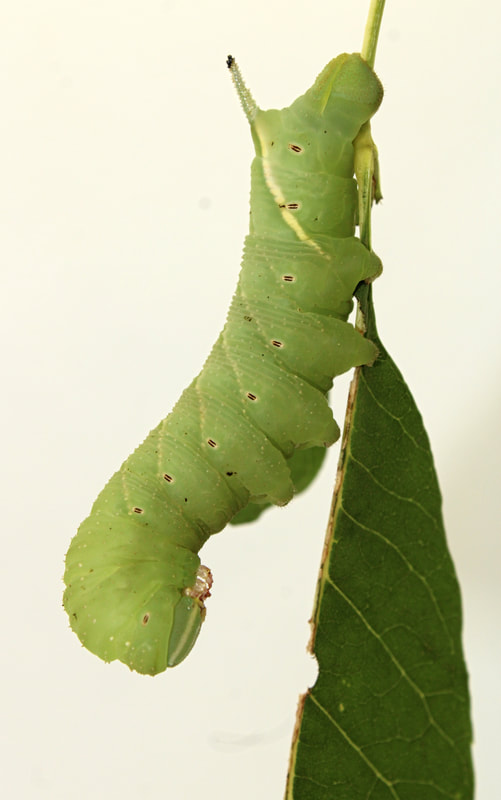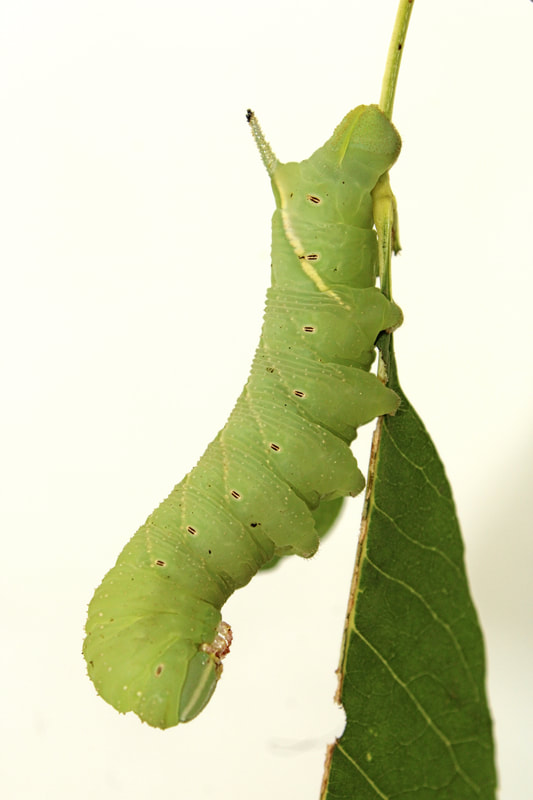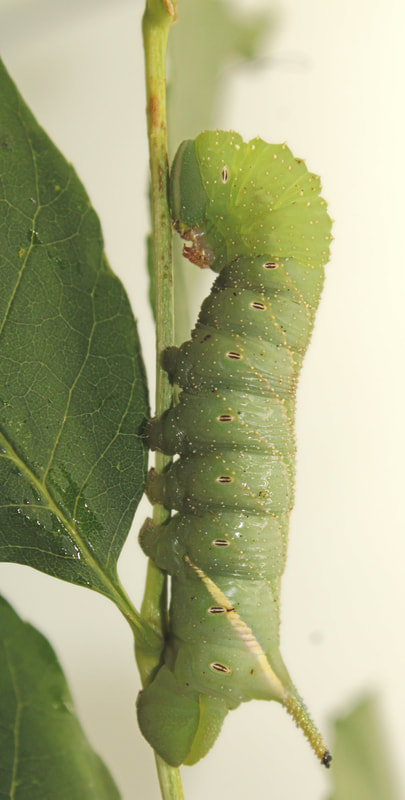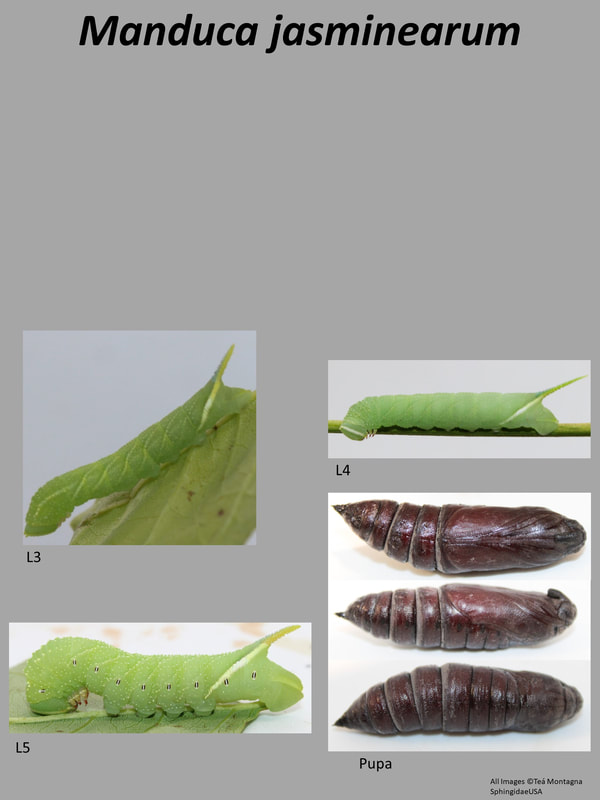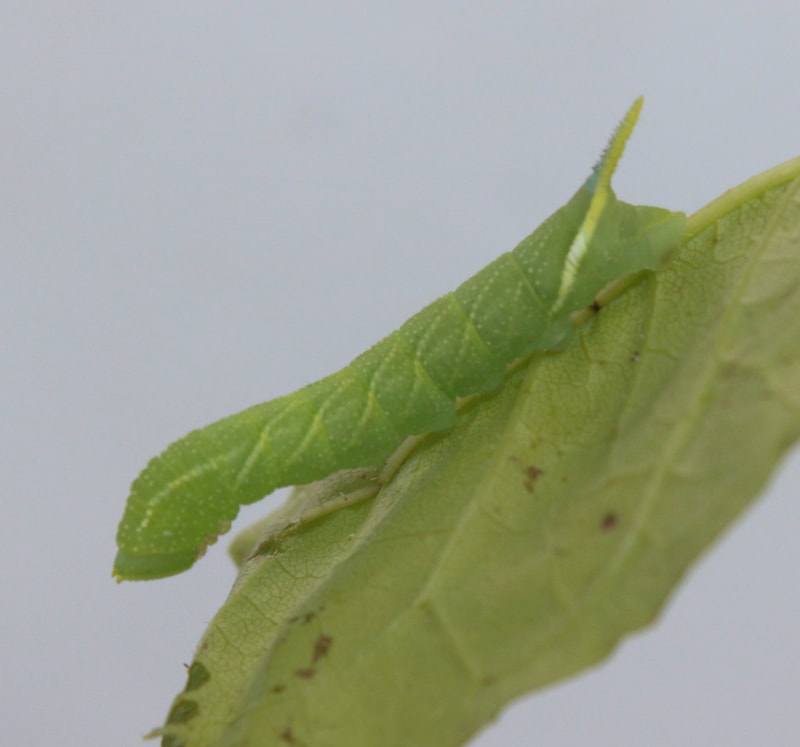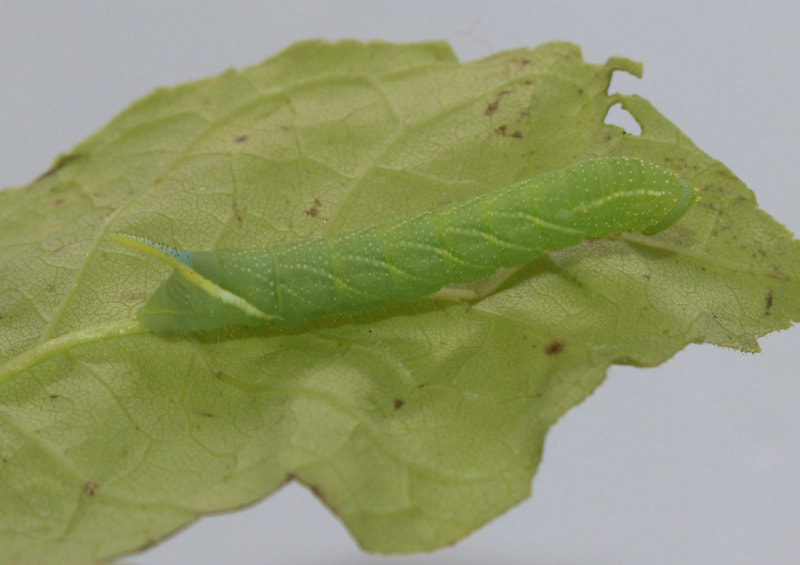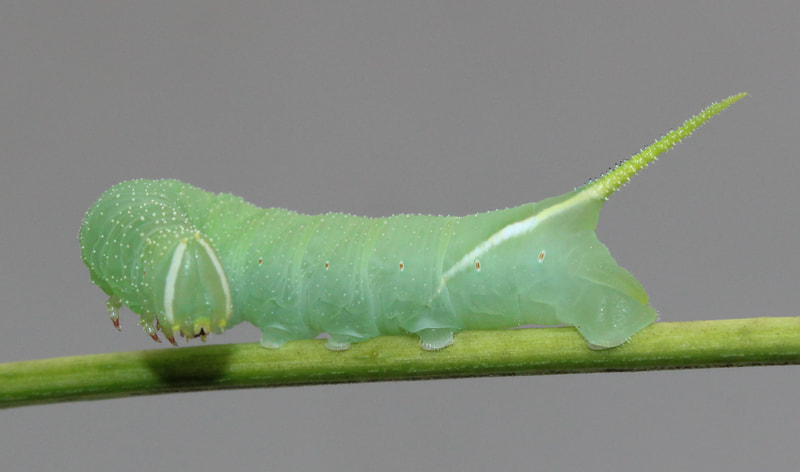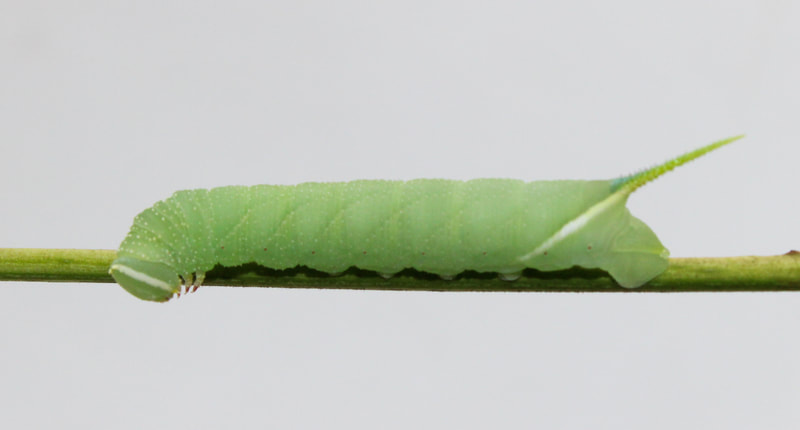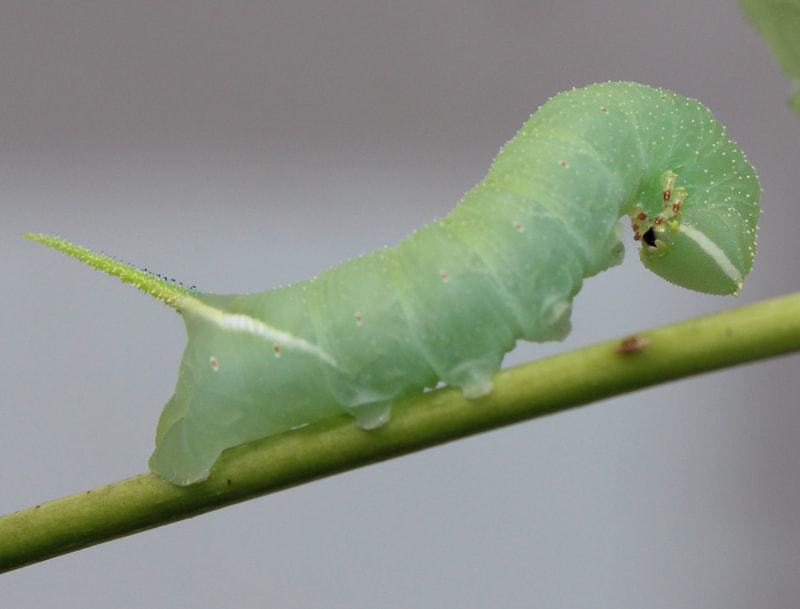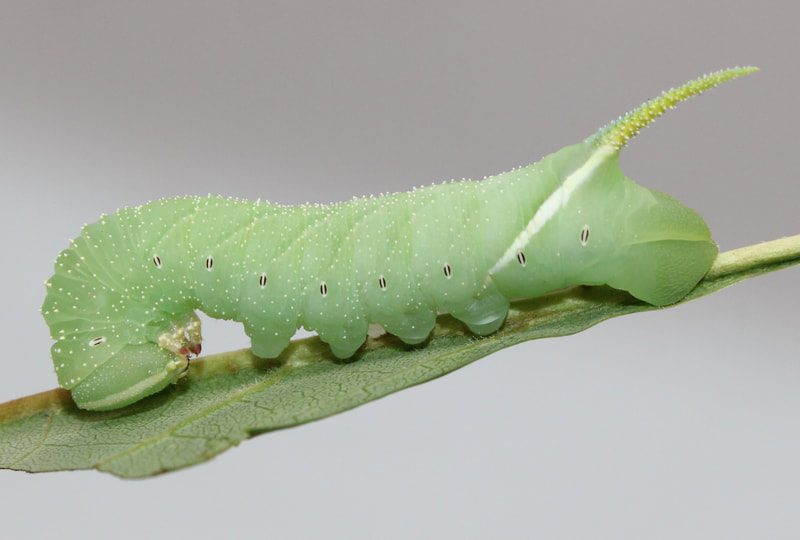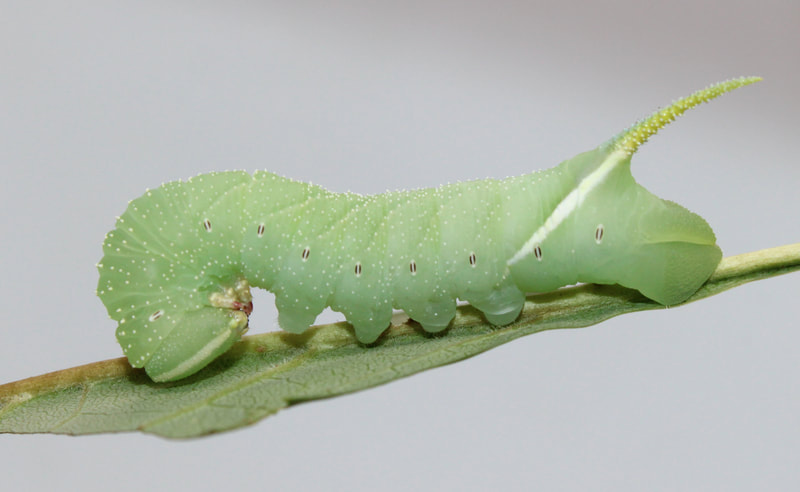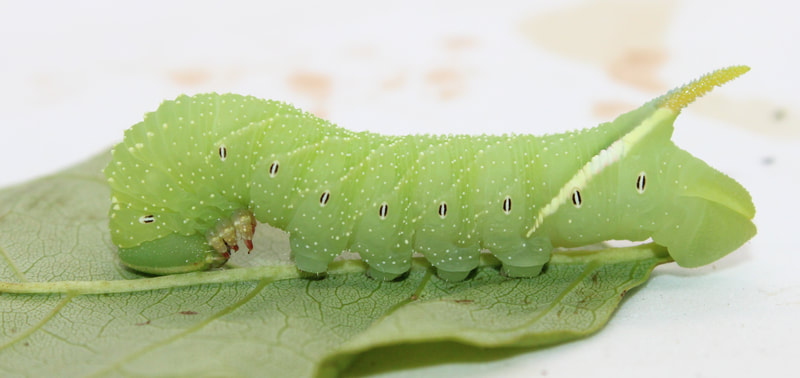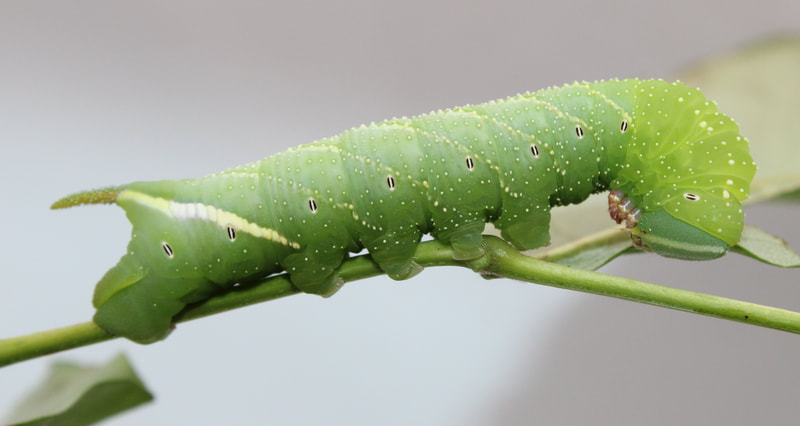|
Common Name(s): Ash Sphinx
Ecology and Life History: This is a moth that flies between May and September across most of its range. In the Northeast, it is most common in July and August. It is likely present year-round in Florida. Adults come to light quite well, and can often be found at gas stations or in parking lots where there are large lights. This species feeds on Fraxinus and seems to utilize the tops of trees more than the lower-branches. Larvae likely rest on the bottom of the leaf during the day, or on the petiole like other Manduca spp. Habitat and Searching for Larvae: This is a species that is reliant on deciduous woodland with lots of Fraxinus. Searching for larvae is difficult. The authors only managed to recover 3 in several nights of searching. All the larvae were found near, or at the top of medium to large (25-30ft) Fraxinus. Adults of this species seem to like edge habitat and clearings in forests, this is likely a good place to begin searching for larvae. The larvae do fluoresce quite brightly under UV light. Rearing Notes: It is quite likely that adult females will deposit eggs in paper bags, but experiments should be run to test this. Larvae found in the field fed quite well on cut Fraxinus placed in tupperware. Pupation was accomplished using moist paper towels or damped soil. Adult description: This is a large sphingid with an overall gray appearance. Superficially, it may resemble Ceratomia undulosa, however Manduca jasminearum has a very distinctive brown blotch around the white discal spot which is absent in Ceratomia undulosa. This moth also has a black line that runs from the leading edge of the wing to the basal edge, bordering the discal spot. The hindwings of this species are almost entirely black. Larval description: L4: The larva is dark green in appearance, there is some granulation. There are 7 whitish stripes, one on each abdominal segment near the spiracles. The horn is long and brownish. L5: The final instar larva is a magnificent thing to see. It’s quite large and distinctive and is covered in white granules, giving it a rough appearance. The base color of the larva is a very light green which is quite different than in L4. The head capsule has 2 parallel cream colored streaks. The 7 streaks on the abdominal segments are cream colored in the final instar, and the spiracles are slightly less defined. The horn is green and granulose with a red tip. Host plants: Click here to load this Caspio Cloud Database
Cloud Database by Caspio |
The gallery to the left contains photos of Manduca jasminearum adults. If you have a photo that you would like to submit to us, please contact us.
The gallery to the right contains photos of Manduca jasminearum larval and pupal stages. If you have a photo that you would like to submit to us, please contact us.
The gallery to the right contains photos of Manduca jasminearum larval and pupal stages. If you have a photo that you would like to submit to us, please contact us.
|
|
